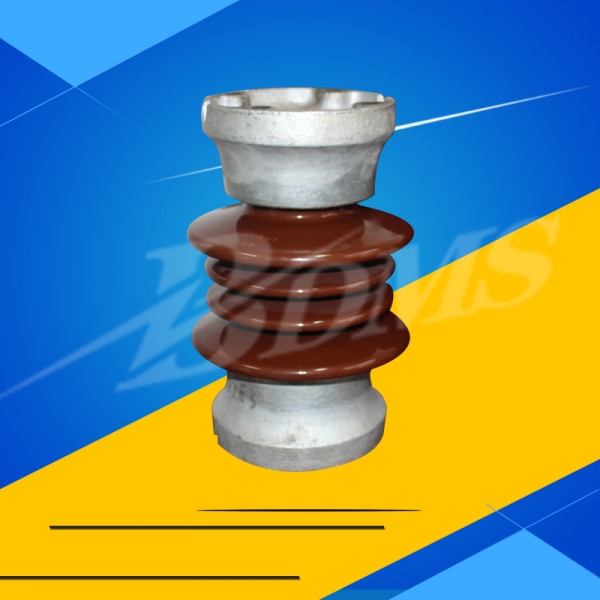Hello, welcome to the Zibo Domaster Insulators Co., Coro.
Company Name: Zibo Dao Maison Insulator Co., Ltd.
Contact: Sun Manager
Phone: 0533-5582999
Mobile: 13864314352
Email: suntengyue@zbdms.com
Fax:0533-5781150
Address: No. 1, Suwang Village, Kunlun Town, Zichuan District, Zibo City
Website: en.zbdms.com

Insulators can be divided into suspension insulators and post insulators according to different installation methods. According to the different insulation materials used, they can be divided into porcelain insulators, glass insulators and composite insulators (also called composite insulators). According to the different voltage levels, they can be divided. Low-voltage insulators and high-voltage insulators; according to the different environmental conditions used, the pollution-resistant insulators used in the contaminated areas are derived; DC insulators are derived according to the type of voltage used; there are various special-purpose insulators, such as insulated cross-arms, Semiconductor glaze insulators and tensioning insulators for distribution, bobbin insulators and wiring insulators. In addition, according to the different possibility of breakdown of the insulating member, it can be divided into two types: the A type, that is, the non-breakable type insulator and the type B, which can be the breakdown type insulator.
Suspension insulators are widely used in the insulation and mechanical fixing of high-voltage overhead transmission lines and soft and busbars of power transmission and distribution. In the suspension insulator, it can be further divided into a disc-shaped suspension insulator and a rod-shaped suspension insulator. Disc suspension insulators are the most widely used insulators for transmission lines. Rod-shaped suspension insulators have been widely used in countries such as Germany.
Pillar insulators are mainly used for insulation and mechanical fixing of busbars and electrical equipment in power plants and substations. In addition, post insulators are often used as part of electrical equipment such as disconnectors and circuit breakers. In the post insulator, it can be further divided into a pin post insulator and a bar post insulator. Pin-type post insulators are mostly used in low-voltage distribution lines and communication lines, and rod-shaped post insulators are mostly used in high-voltage substations.
Porcelain insulator insulation is an insulator made of electrical ceramics. Electrical ceramics are made from quartz, feldspar and clay. The porcelain surface of the porcelain insulator is usually covered with enamel to improve its mechanical strength, waterproof and wet, and increase the surface smoothness. Among various types of insulators, porcelain insulators are most commonly used.
The glass insulator insulator is an insulator made of tempered glass. The surface is in a state of compressive prestressing. If cracks and electrical breakdown occur, the glass insulator will break into small pieces by itself, commonly known as "self-explosion." This feature eliminates the need for "zero value" detection of the glass insulator during operation.
Composite insulators are also called composite insulators. The insulating member is composed of a glass fiber resin core rod (or core tube) and an insulator of an organic material and an umbrella skirt. The utility model has the advantages of small size, light weight, high tensile strength, excellent anti-pollution and flashover performance. But anti-aging ability is not as good as porcelain and glass insulators. Composite insulators include: rod-shaped suspension insulators, insulated cross-arms, post insulators, and hollow insulators (ie, composite sleeves). Composite bushings can replace porcelain sleeves used in a variety of electrical equipment, such as transformers, surge arresters, circuit breakers, capacitive bushings and cable terminations. Compared with the porcelain sleeve, it has the advantages of high mechanical strength, light weight and small dimensional tolerance, and can avoid damage caused by blasting.
Low-voltage insulators and high-voltage insulators Low-voltage insulators are insulators used in low-voltage distribution lines and communication lines. High-voltage insulators are insulators used in high-voltage, ultra-high-voltage overhead transmission lines and substations. In order to meet the needs of different voltage levels, different numbers of single (piece) insulators of the same type are usually used to form insulator strings or multi-section insulating pillars.
Stain-resistant insulators mainly adopt measures to increase or enlarge the insulator shed or umbrella edge to increase the creepage distance of the insulator to improve the electrical strength of the insulator in the dirty state. At the same time, the shape of the shed structure is also changed to reduce the amount of natural dirt on the surface to improve the anti-smudge performance of the insulator. The creepage ratio of the stain-resistant insulator is generally 20% to 30% higher than that of the ordinary insulator, or even more. Areas with high pollution flashovers in China's power grids are accustomed to using double-layer umbrella structure-resistant pollution-resistant insulators. These insulators have strong self-cleaning ability and are easy to clean manually.
DC insulators mainly refer to disc insulators used in direct current transmission. DC insulators generally have a longer creepage distance than AC-resistant insulators, and their insulators have a higher bulk resistivity (not less than 10 Ω·m at 50 °C), and the connection fittings should be equipped with the sacrifice of anti-electrolytic corrosion. Electrodes (such as zinc sleeves, zinc rings).
Type A insulator and Type B insulator Type A are non-breakable insulators, which have a dry flashover distance of less than 3 times the dry breakdown distance (casting resin) or 2 times (other materials): Type B can be broken down. Type insulators with a breakdown distance less than 1/3 of the dry flashover distance (casting resin) or 1/2 (other materials). The insulator dry flashover distance refers to the shortest distance through the air along the outer surface of the insulator; the breakdown distance refers to the shortest distance within the insulating material through the insulator.
Zibo Dao Maison
0533-5582999
13864314352
suntengyue@zbdms.com
No. 1, Suwang Village, Kunlun Town, Zichuan District, Zibo City
Website: en.zbdms.com